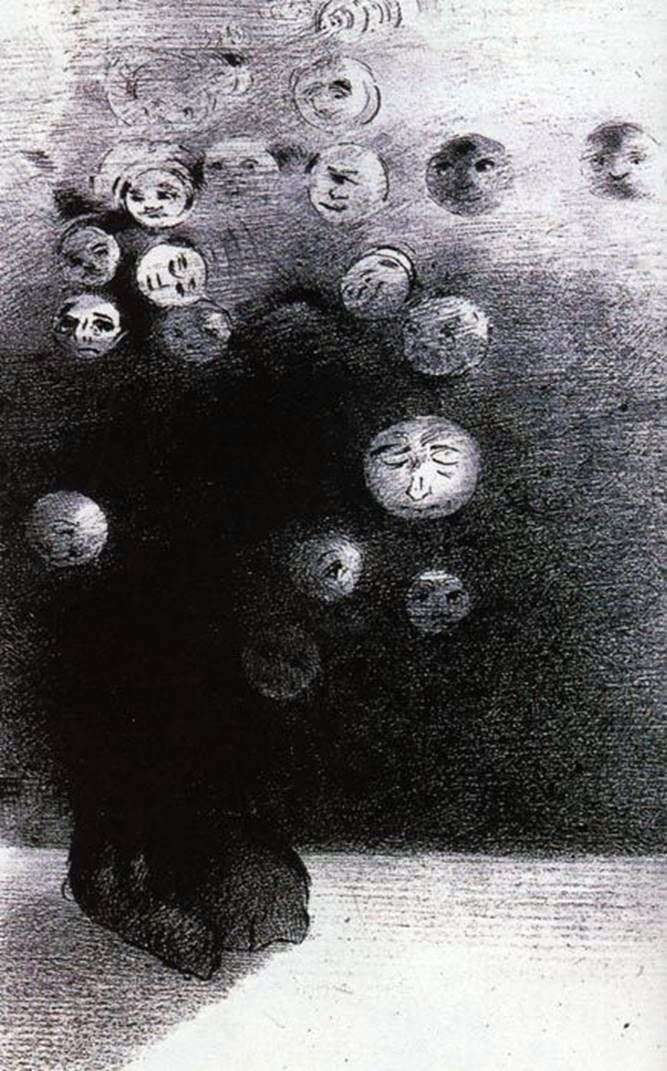
Lithograph was invented in 1798 and immediately gained popularity as a relatively inexpensive and fast way to reproduce an image in a large number of copies.
In the manufacture of lithographs, the artist puts an image on a stone plate with oily lithographic paint, from which an imprint is then made. Soon, artists such as Delacroix and Géricault drew attention to the lithograph. Their efforts lithograph raised to an independent genre of painting.
Appreciated the possibilities of lithography and Honore Daumier, who resorted to it when creating his famous cartoons. Later, in the XIX century, the so-called translated lithography won the special love of artists, when drawing with a lithographic pencil was first made on paper and then transferred onto a stone. Tried his strength in this genre and Camille Corot, the result of which was the album “Twelve original sketches and drawings.”
The success of this album inspired many artists – including Manet and Degas. As for Redon, he also repeatedly turned to lithography. One of his most famous lithographic works is on the right. It is called “Why should there not be an invisible world next to us?” Redon created it in 1887.
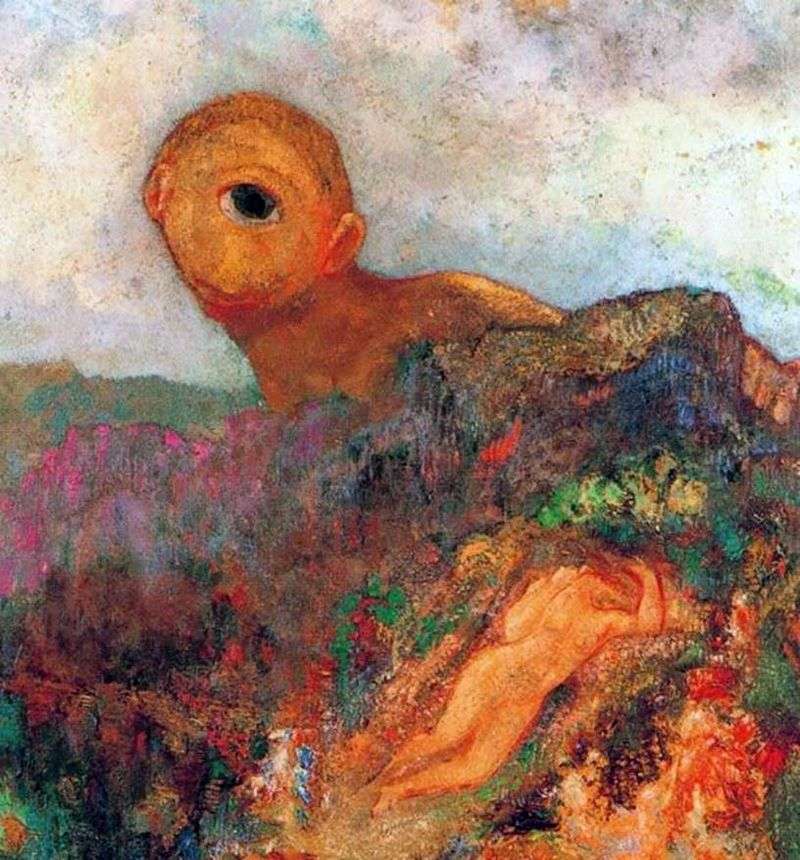 Cyclops by Odilon Redon
Cyclops by Odilon Redon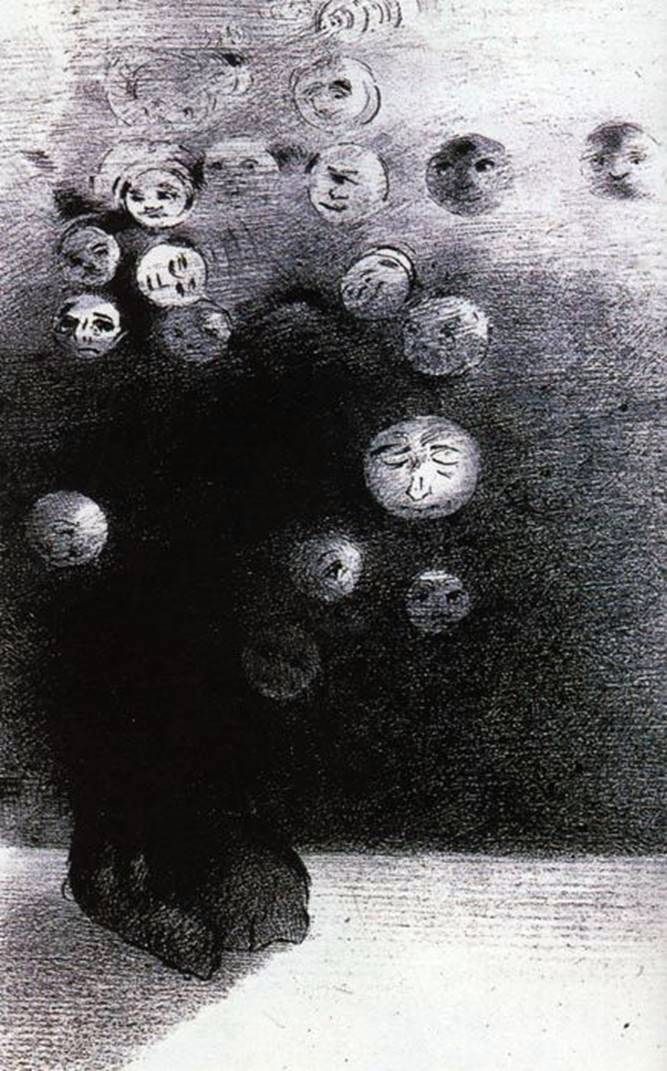 Lithographies – Odilon Redon
Lithographies – Odilon Redon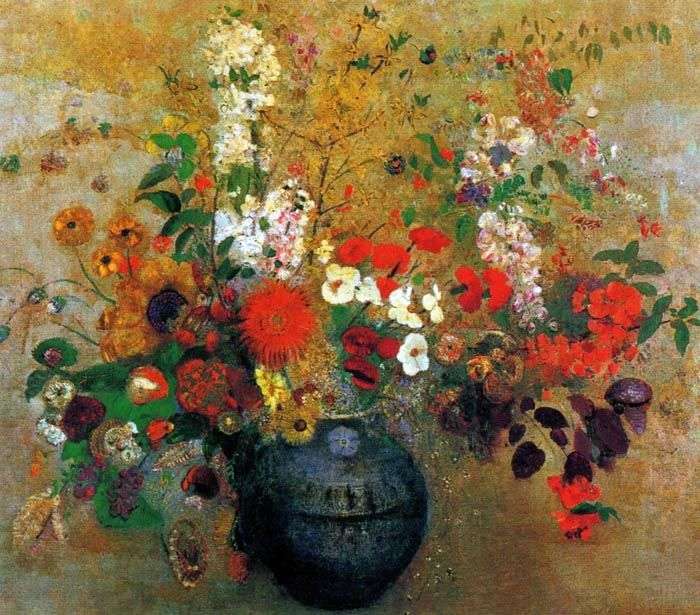 Flower Bouquet by Odilon Redon
Flower Bouquet by Odilon Redon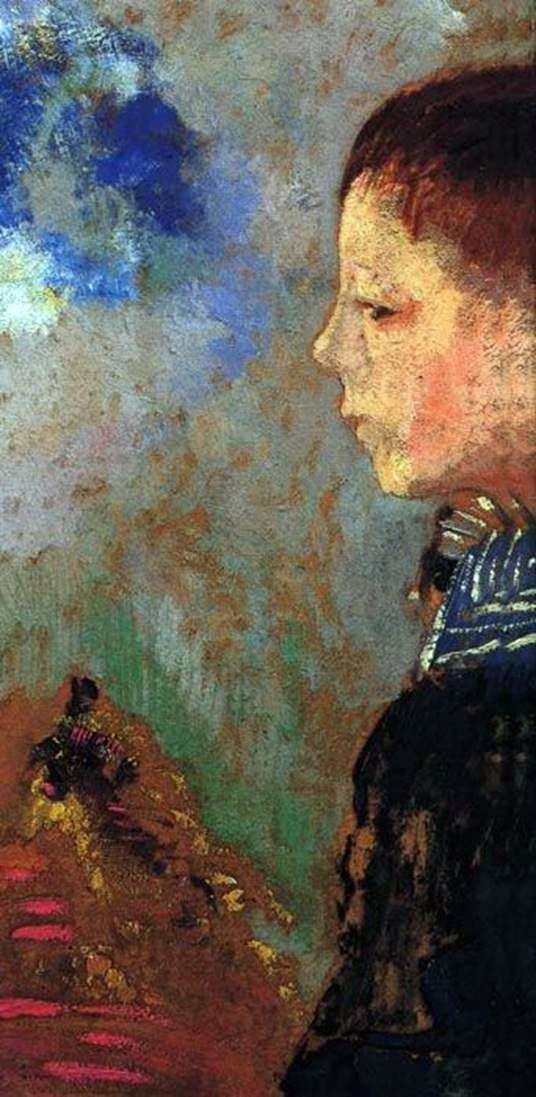 Portrait of Ari with a blue collar by Odilon Redon
Portrait of Ari with a blue collar by Odilon Redon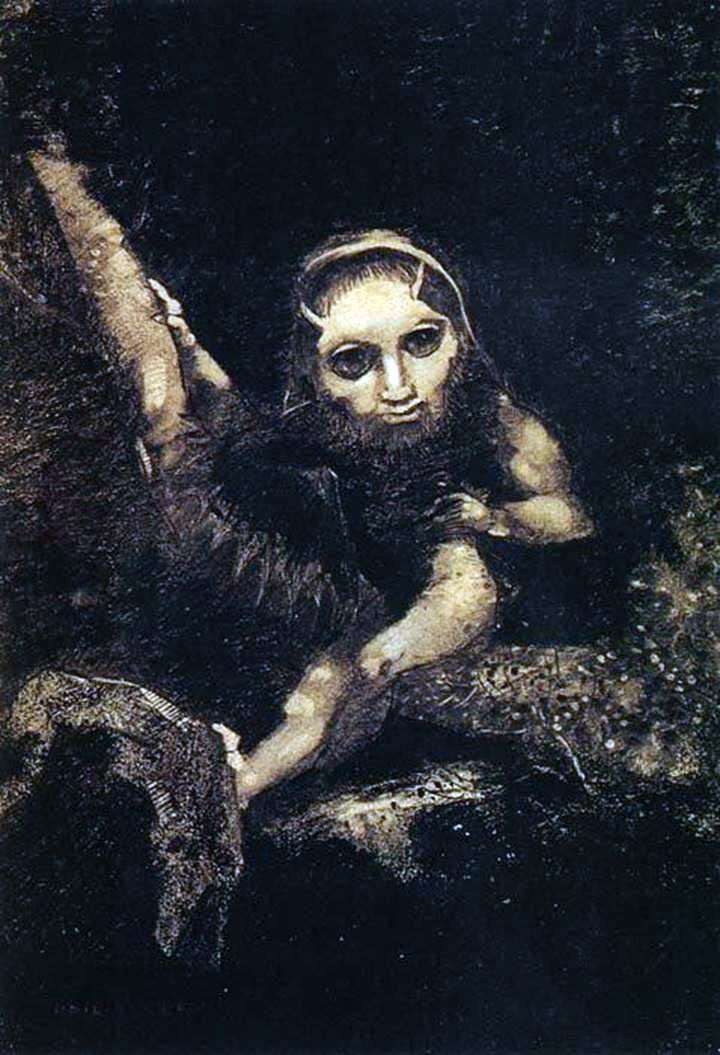 Elf Caliban by Odilon Redon
Elf Caliban by Odilon Redon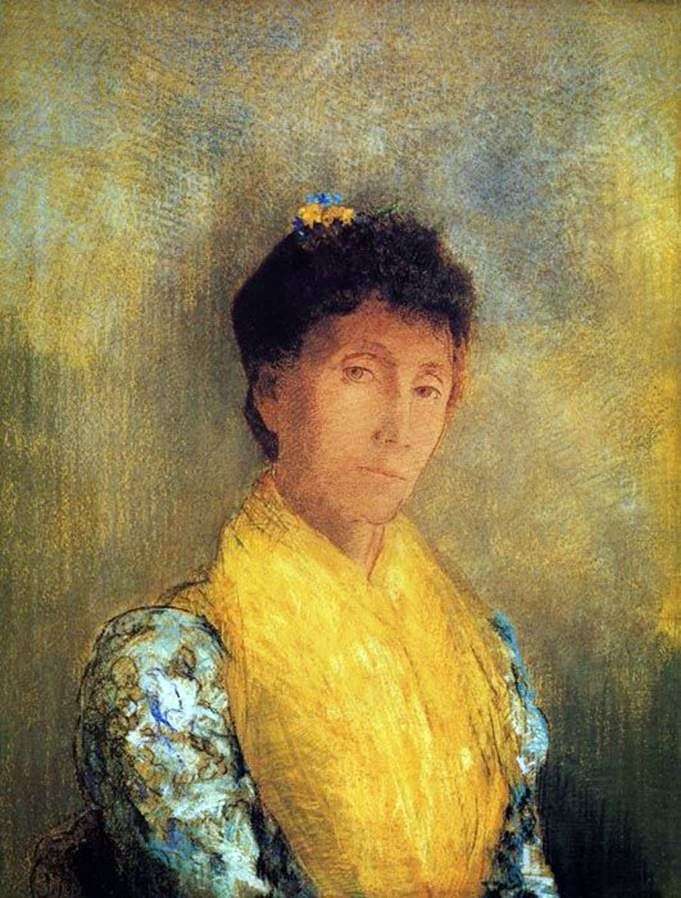 Woman in Yellow by Odilon Redon
Woman in Yellow by Odilon Redon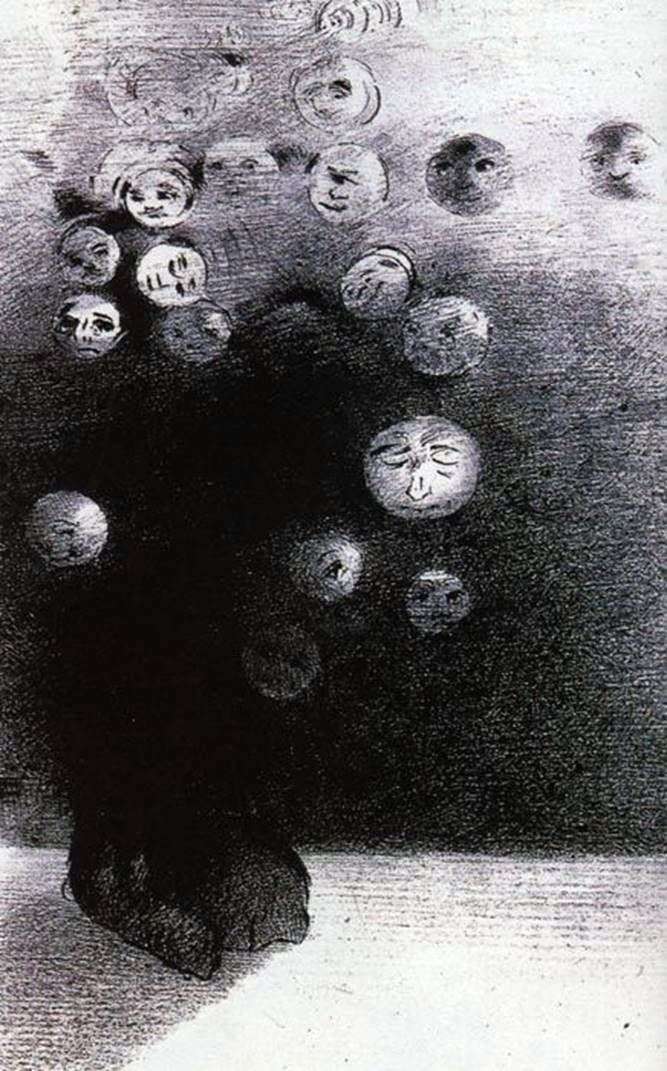 Litografías – Odilon Redon
Litografías – Odilon Redon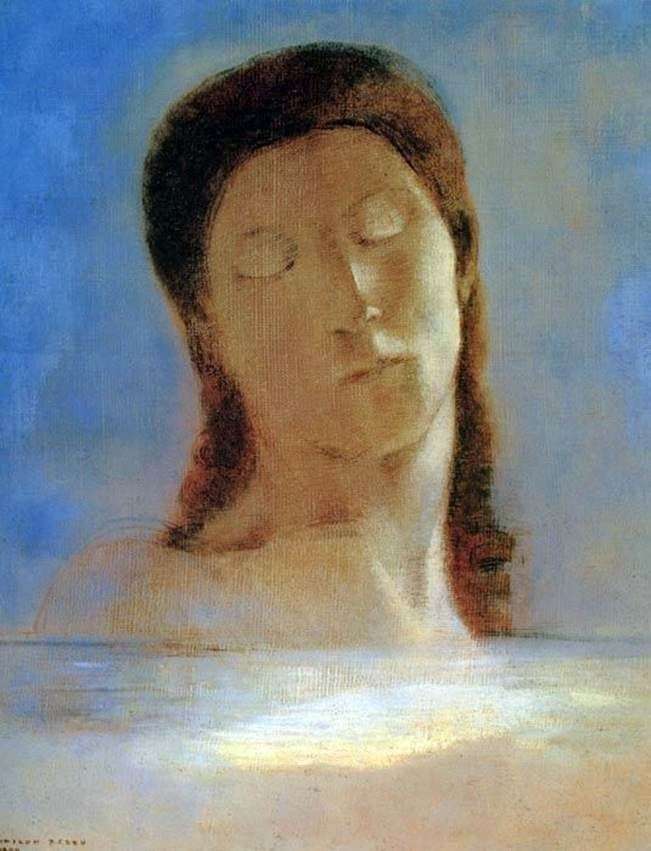 With eyes closed by Odilon Redon
With eyes closed by Odilon Redon